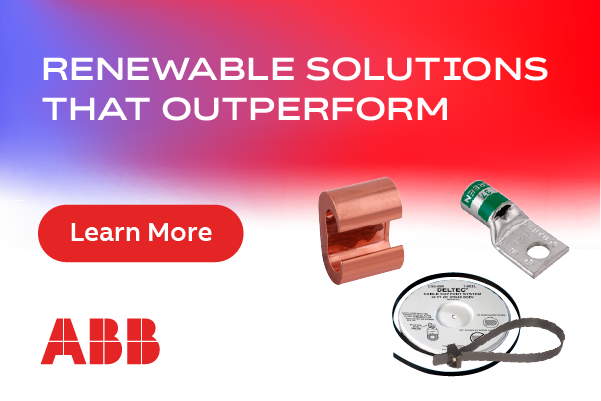Solar's New Herd of Asset Managers The social, environmental, and economic benefits of solar grazing
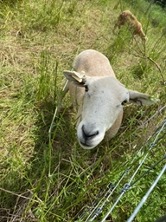 On a warm day in July of 2021, upon arriving for a routine operations check of a 750kW community-scale solar project in Royalton, Vermont, the asset manager was greeted by a friendly and curious herd of sheep. After thoroughly vetting the new arrival, the herd was content to get back to its work of keeping the vegetation at the site in check. This scenario is a great example of the mutually beneficial relationship between agriculture and the solar industry. Sheep are more than happy to do the work that noisy, fossil fuel-powered mowers used to do on this site, while also taking advantage of the shade under the panels for rest.
On a warm day in July of 2021, upon arriving for a routine operations check of a 750kW community-scale solar project in Royalton, Vermont, the asset manager was greeted by a friendly and curious herd of sheep. After thoroughly vetting the new arrival, the herd was content to get back to its work of keeping the vegetation at the site in check. This scenario is a great example of the mutually beneficial relationship between agriculture and the solar industry. Sheep are more than happy to do the work that noisy, fossil fuel-powered mowers used to do on this site, while also taking advantage of the shade under the panels for rest.
A growing partnership is developing across the solar industry, with farmers and other landowners on track to lease more than 2 million acres of land in the U.S. for community and utility scale photovoltaic solar projects by 2030. Accelerating the deployment of solar arrays - beyond the 300,000 acres of farmland currently hosting solar projects - to reach these projections presents a tremendous opportunity for farmers and local communities.
The partnership between the solar industry and the agriculture sector has led to a broader trend emerging for solar and agricultural industry that includes a critical role for livestock: agrivoltaics. Herds of sheep are now providing solar grazing services that offer a number of benefits to the solar project itself, as well as the farm and local community.
Enter the "electric" sheep
Sheep are the most common solar grazing animals. They enjoy the shade of the solar panels on hot days, napping and grazing in locations that human-operated mowers would struggle to reach. They are resourceful and discerning foragers, unlikely to chew on wires (like goats) and not large enough to damage racking (like cows). Their size also allows them to walk under the panels and in and around above ground equipment to search for vegetation that might otherwise become a shady nuisance for a solar array.
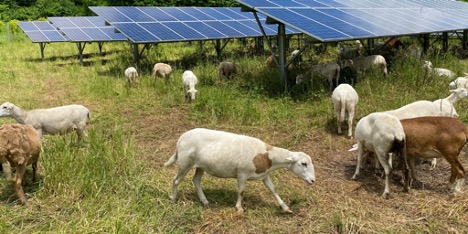
Sheep hard at work in Royalton, VT managing all those hard-to-reach spots under the panels
With solar grazing, the vegetation at solar sites becomes a source of nutrition and a pasture for sheep, which can in turn support a larger domestic market for sheep and lamb products in the U.S., where nearly 50 percent of the lamb consumed is imported. There is a growing interest in local food production that puts a premium on locally-produced lamb, dairy products, and specialty wools, further underscoring the value of solar grazing with sheep.
Solar grazing keeps farmland in active food production
Solar grazing can also contribute dairy, meat, and wool to regional markets where agricultural production is in decline. For example, from 1969 to 2020, Vermont lost nearly 3,400 individual dairy farms as production was largely ceded away from smaller family farms into large, agri-business operations. The co-location of solar generation projects and agricultural production on Vermont's working landscape provides an example of the numerous social, environmental, and economic benefits for farmers nationwide. In Vermont and elsewhere, where farmers have been faced with challenge after challenge, solar affords an opportunity to diversify revenues while keeping the land in active food production. Leveraging income from PV generation provides a unique opportunity to de-risk and diversify farming operations so as to maintain financial viability for farmers.
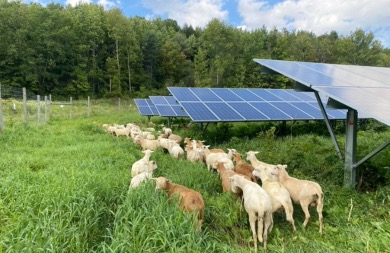
Solar grazing also reduces or eliminates the need for fossil fuel-powered equipment like lawn mowers, reducing emissions and costs.
Additionally, preliminary research out of Minnesota finds that implementing managed sheep grazing at solar projects significantly increases soil carbon storage and other nutrients important for plant production. Early estimates show, and long-term study may confirm, that an acre of recovering agricultural soil installed with native plants may result in one ton of sequestered carbon per year, and that can possibly accumulate for 12 to 15 years before saturation is reached. And in a future economy where carbon sequestration will be monetized, this can result in an additional source of revenue. Utilizing sheep as a vegetation maintenance tool can reduce the overall carbon footprint of the maintenance of the solar energy project, maintain a tie to the local agricultural community, build soil health, and enhance soil carbon sequestration.
A new agrivoltaic economy
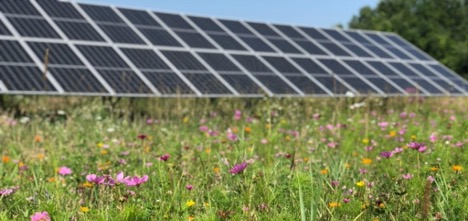
Solar arrays can also support critical habitat for endangered pollinators, a key element in our food chain.
Solar projects can provide additional agricultural value beyond the social, economic and environmental benefits of co-located sheep grazing; there is a growing number of agricultural activities that are well suited to pair with solar generation. These include planting pollinator-friendly ground cover for honey production, growing mushrooms and other vegetable crops, and keeping chickens and other poultry. Depending on the project location, there are many opportunities for solar and agricultural collaborations. In short, the growing agrivoltaic economy will allow a given area to harvest the value of the sun in multiple ways - as fuel for crops, pasture for sheep, and as a source of carbon free renewable energy.
Chad Farrell is CEO and Founder of Encore Renewable Energy, which offers full-service community-scale renewable energy services.
Encore Renewable Energy | encorerenewableenergy.com
Author: Chad Farrell
Volume: 2022 March/April











.png?r=6999)
